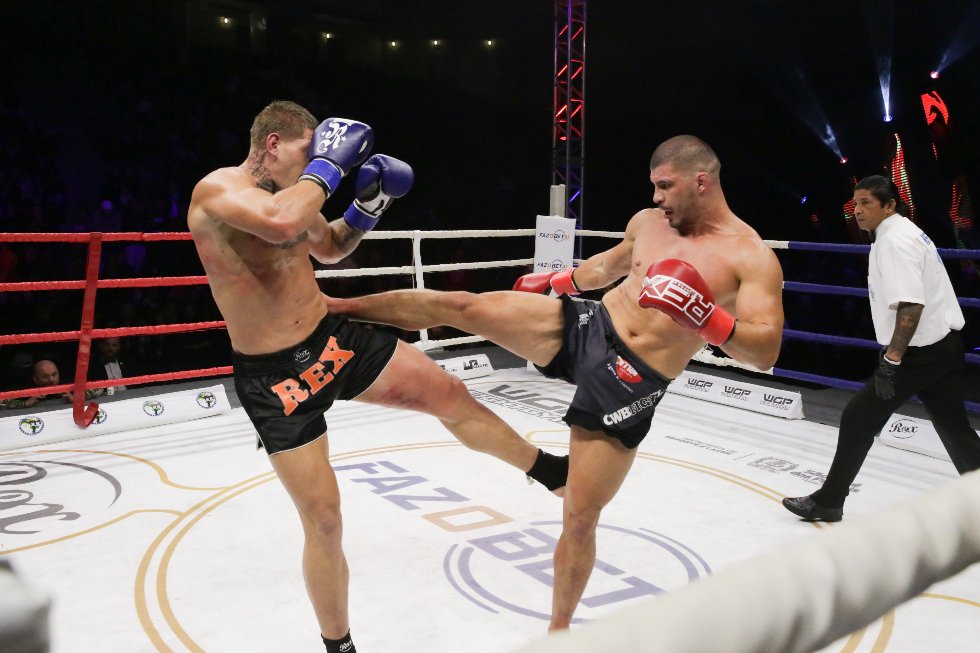Dive into the exhilarating world of K-1 Kickboxing, a martial arts phenomenon that has captivated the globe but found its heart and home in Japan. Today, we’ll be shedding light on the meteoric rise and roaring success of this sports organization, unveiling the reasons behind its unmatched popularity and the impact it has had on modern kickboxing. Ready to embark on a thrilling journey through high-octane punches, swift kicks, and the roar of the crowds? Let’s get started.
Established in the 90s in the Land of the Rising Sun, K-1 Kickboxing has skillfully managed to blend elements of Karate, Muay Thai, and Kickboxing into an adrenaline-pumping combat sport that is both a spectator’s delight and a fighter’s dream. In this discourse, we’ll be examining how the organization has carved a niche for itself, transforming from an underdog into a global sensation, and how it has influenced the world of kickboxing.
From dissecting the strategies and marketing savvy that propelled K-1 to its celebrated status, to exploring the star fighters who’ve added to its glamour and allure, we’ve got it all covered. Through this journey, we’ll understand why K-1 Kickboxing is more than just a sport in Japan; it’s a cultural cornerstone that’s reshaped the perception of martial arts around the world. So gear up, because this is going to be one knockout of a tale!

The Genesis of K-1 Kickboxing
K-1 Kickboxing’s inception in Japan in 1993 marked a significant shift in the world of martial arts. This was a time when the sport was experiencing a decline in popularity, with the traditional karate and boxing disciplines losing their appeal to a new generation of fight enthusiasts. K-1 sought to break the mould, combining elements of these traditional martial arts with the intensity and spectacle of kickboxing.
What set K-1 apart was its unique rule set. While other martial arts had strict rules and limitations on strikes, K-1 allowed fighters to use a range of striking techniques, including knees and spinning back kicks. These unique rules made for exciting, high-energy fights that drew large audiences both in Japan and around the world.
The K-1 Format
K-1 is unique in its format, adopting a tournament-style structure that pits eight fighters against each other in a single-elimination competition. The fighters face off in quarter-final, semi-final, and final matches in one night, which not only tests their physical prowess but also their strategic and tactical abilities.
The format brings an additional layer of suspense and drama to the sport. With a maximum of three rounds per match, fighters must strategize carefully to avoid early fatigue while still trying to score points and avoid being knocked out.
Global Impact of K-1
The explosive popularity of K-1 in Japan soon spread to the rest of the world. The organization’s success can be attributed to its blend of martial arts traditions with modern entertainment values.
Key to K-1’s international success has been its ability to attract talented fighters from around the globe. This not only increased the sport’s competitiveness but also brought diversity and international recognition.
/i.s3.glbimg.com/v1/AUTH_bc8228b6673f488aa253bbcb03c80ec5/internal_photos/bs/2024/q/e/YuwQfESf6Up3HecGaAUA/guto-inocente-1-.jpg)
/i.s3.glbimg.com/v1/AUTH_bc8228b6673f488aa253bbcb03c80ec5/internal_photos/bs/2024/q/e/YuwQfESf6Up3HecGaAUA/guto-inocente-1-.jpg)
/i.s3.glbimg.com/v1/AUTH_bc8228b6673f488aa253bbcb03c80ec5/internal_photos/bs/2024/q/e/YuwQfESf6Up3HecGaAUA/guto-inocente-1-.jpg)
Media and Entertainment Influence
Media and entertainment played an important role in K-1’s rise to prominence. The organization leveraged television and the internet to showcase its fights, attracting a global audience. Moreover, K-1’s association with celebrities and pop culture figures added an element of glamour and intrigue that further boosted its popularity.
Legacy and Influence
K-1’s success in Japan and around the world has had a profound influence on the sport of kickboxing. It has helped popularize the sport, bringing it to a wider audience and inspiring a new generation of fighters.
The organization’s impact extends beyond the realm of kickboxing, influencing other combat sports like Mixed Martial Arts (MMA). The incorporation of K-1 striking techniques into MMA has added another dimension to the sport, making it more exciting and versatile.
Notable Fighters and Championships
- Ernesto Hoost: A four-time K-1 World Grand Prix champion, Hoost is considered one of the greatest kickboxers in the history of the sport.
- Peter Aerts: Known as ‘The Dutch Lumberjack’, Aerts is a three-time K-1 World Grand Prix champion and is renowned for his powerful high kicks.
- Semmy Schilt: A four-time K-1 World Grand Prix champion, Schilt holds the record for the most consecutive K-1 World Grand Prix victories.
In conclusion, the success of K-1 Kickboxing in Japan and its subsequent global impact has cemented the organization’s place in martial arts history. With its unique blend of traditional and modern fighting techniques, K-1 continues to captivate audiences around the world and inspire the next generation of fighters.
Conclusion
In sum, the advent of K-1 Kickboxing in Japan not only resurrected the waning appeal of martial arts but also revolutionized it with its innovative blend of traditional and modern fighting techniques. Its unique rule set and tournament-style format, coupled with the strategic and tactical prowess required of its fighters, have crafted an exceptionally suspenseful and dramatic sport that has taken the world by storm. From its inception in 1993, K-1 Kickboxing has skyrocketed in popularity, attracting a diverse array of talented fighters globally, and expanding its influence beyond Japan’s borders. It has harnessed the power of media and entertainment, effectively leveraging television, the internet, and celebrity associations to boost its international profile. Furthermore, K-1 Kickboxing’s legacy extends beyond its own sport, influencing other combat sports like MMA and inspiring a new generation of fighters. In producing world-class fighters and championships, K-1 Kickboxing has etched its mark in martial arts history, continuing to captivate audiences and shape the future of global combat sports.
